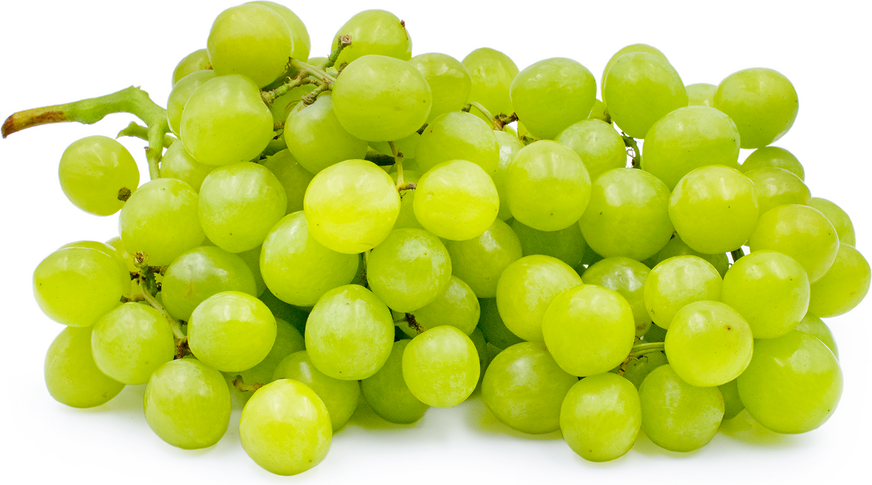


Princess Grapes
Estimated Inventory, 2 lb : 0
Description/Taste
Princess grapes are medium to large in size and are round to cylindrical in shape, growing in loose, large clusters on trailing vines. The skin is smooth, shiny, somewhat thick, and light green. The flesh is a translucent pale green and is considered seedless, though there may be some underdeveloped seeds present that are undetectable. Princess grapes are juicy, crisp, and crunchy, and have a sweet-tart taste with hints of muscat flavor.
Seasons/Availability
Princess grapes are available late summer through fall.
Current Facts
Princess grapes, botanically classified as Vitis vinifera ‘Princess,’ are a hybrid variety from California and are a cross between crimson table grapes and an unnamed, white seedless variety from the United States Department of Agriculture. The large grape variety was developed as part of an effort to extend the market season for California table grapes. Princess grapes are often labeled and sold as California seedless grapes by large grocers and were originally released under the name Melissa, but the name was changed to Princess after a copyright issue.
Nutritional Value
Princess grapes are an excellent source of vitamin K and potassium, and also contain some calcium and vitamin C.
Applications
Princess grapes are best suited for raw consumption and can be eaten fresh, out-of-hand, added to fruit salads or cheese boards and dried for raisins. They can be frozen and used as ice cubes for white wine or sangria or pureed and used in cocktails, sorbets, and granitas. They can also be added to smoothie bowls, canapes, fruit skewers, and green salads, or chopped and used in relishes, compotes, or chutneys. Princess grapes pair well with chicken, fish, brie, and stronger smelling cheeses, like gorgonzola. They will keep up to one week when stored in a perforated plastic bag in the refrigerator.
Ethnic/Cultural Info
California’s grape industry has been around since the mid-1800s and was developed when prospectors came to California searching for gold but found that grape cultivation could be even more lucrative. Today the industry’s focus is mainly on table and wine grapes. California is responsible for over 99% of the table grapes commercially grown in the United States, and 40% of those table grapes are exported to countries such as China, Canada, Mexico, Taiwan, and the Philippines. Princess grapes were created from a breeding program through the USDA/ARS Horticultural Crops Laboratory and were bred to help lengthen the table grape season.
Geography/History
Princess grapes were developed and first grown in the fertile San Joaquin Valley in California. They were released in 1999, after struggling with fruit set and other issues during growing trials. Princess grapes are primarily grown in California in the United States. Internationally, the USDA has made the grape variety available to licensed growers and can be found at specialty markets in Australia, Italy, Mexico, Portugal, and Spain.
Recipe Ideas
Recipes that include Princess Grapes. One
| The Gunny Sack |
|
Triple Grape Fruit Pizza |




